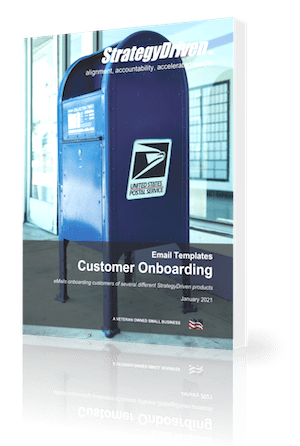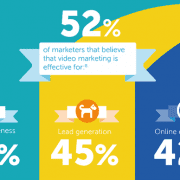5 Ways to Improve Your Bottom Line When Your Business Goes Omnichannel
The omnichannel strategy is one that integrates all the different channels your business uses—i.e. online, mobile, and physical stores—to offer a seamless and consistent customer experience. This approach ensures that whether a customer shops through an app, website, or in person, the service quality, information they glean from a business, and interaction with business staff all remain the same.
For small- and medium-sized enterprises (SMEs) that might be used to holding their operations from a brick-and-mortar store, adopting an omnichannel strategy may be particularly effective at propelling the business into the future by aligning with modern consumer expectations and using technology to strengthen competitive advantage. What’s more, it can be applied to various aspects of a business, from marketing and sales to customer service and inventory management.
Going the omnichannel route may ensure that your business remains adaptable, customer-focused, and prepared for the evolving demands of the retail environment. But you have to be smart about your transition to omnichannel operations if you want to improve your bottom line. Here are five tips to enhance your profitability and ensure sustainable growth for your business when you go omnichannel:
1. Streamline Your Online and Offline Checkout Processes
First, efficiency is crucial when it comes to your checkout processes. A smooth, fast, and user-friendly checkout can significantly enhance customer satisfaction and increase the likelihood of repeat purchases, both online and in-store.
For your e-commerce and mobile stores, in particular, you’ll need a reliable online payments gateway that can easily be integrated into your Shopify or WooCommerce store. With no-code plugins like the ones available from the Philippines’ Maya Business, you won’t need to hire a developer to install the gateway for you. What’s more, some providers can help you issue professional digital invoices even if you don’t have a website yet so that you can still showcase your products and services.
Whichever payment gateway provider you choose, ensure that they can accommodate your customers’ cashless payment preferences, such as digital wallets, QR codes, and traditional credit and debit cards. After all, one of the reasons customers abandon their carts is due to the lack of payment options.
Similarly, in your physical store, you’ll want to onboard modern credit card terminals that can accommodate a variety of cashless payment options, providing customers with multiple payment methods to choose from. In some cases, these payment terminals can be readily integrated into your existing point of sale (POS) electronic cash registers, thus minimizing the cost of adoption.
With smooth checkout processes on all of your channels, you’ll be able to provide a seamless shopping experience for your customers—which they will appreciate and reward with genuine customer loyalty.
2. Integrate Data and Inventory Across All Channels
?You’ll also want to make the effort to integrate all your data and inventory across all channels if you want to improve your bottom line after your transition. Remember that data silos, which occur when information is isolated in separate systems, can hinder sales by leading to inconsistencies in inventory management, inaccurate product availability, and disjointed customer experiences.
For example, consider a retail business with separate inventory systems for its online store and physical locations. If a customer tries to purchase a product online but it’s out of stock in the online system while still being available in-store, they may abandon the purchase altogether or seek out a competitor with better inventory visibility.
A business that takes care to integrate its data and inventory across all channels upon going omnichannel can better provide accurate and real-time information to customers, ensuring product availability and enabling options like buy online, pick up in-store (BOPIS). This integration will do a lot to enhance customer satisfaction and reduce lost sales opportunities.
3. Ensure Smooth Fulfillment and Logistics Operations
Omnichannel strategies demand robust logistics and fulfillment operations. Efficiently managing these aspects of your operation ensures that whether a customer orders online or purchases in-store, the experience is always something they’ll be able to depend on.
This part of your business begins with an integrated inventory management system that ensures stock information is accurate across all channels. After an order is received, your staff should be tasked to find the item and deliver it either to the customer’s address or your business’s physical store for in-store pickup.
These aspects of your omnichannel strategy collectively form its logistics and fulfillment operations, which are some of the most challenging aspects of your business. If you have multiple warehouses and stores, your operations may be even more complicated. However, if you’ve developed a standard operating procedure that addresses all the pain points, your staff will be able to successfully deliver products on time. That, in turn, will motivate customers to keep buying from you.
4. Improve Your Mobile Engagement
With more consumers than ever shopping on their mobile devices, optimizing your e-commerce store for mobile is not just an option—it’s a necessity to strengthen your bottom line. According to data collected by Statista, the global mobile e-commerce market was worth USD 2.2 trillion in 2023 and is projected to reach USD 3.4 trillion by 2027. By then, its market share would have been 62 percent of all e-commerce sales. This illustrates the rate at which mobile e-commerce is dominating other sales channels.
With this in mind, ensure that your e-commerce website is mobile-responsive enough to facilitate easy browsing and purchasing. Furthermore, consider investing in a mobile app that offers full functionality, with features like push notifications and loyalty programs to enhance user engagement. An optimized mobile platform can significantly increase your reach and strengthen your omnichannel presence.
Lastly, take the time to redevelop your marketing strategy to reflect your transition to omnichannel operations. Create buzz about your business going omnichannel on social media, and consider offering rewards like exclusive promos and incentives to customers who will explore new offerings like BOPIS.
5. Train Your Staff
The success of your shift to an omnichannel approach relies heavily on your staff being knowledgeable and adaptable. To start, train your team to understand how each channel functions and how they interconnect.
Besides focusing on technical aspects, such as how the checkout process works and how to operate your new credit card terminal, the training should also emphasize providing consistent customer service across all platforms. From answering queries through social media channels to assisting walk-in customers in your physical store, your staff should be able to facilitate a convenient and hassle-free shopping experience that buyers would be happy to repeat.
Again, the omnichannel approach is a great strategy for businesses looking to improve upon their profitability in a digital-first world. If you’re able to implement smart strategies like the ones listed above, your business may see stronger profits upon going omnichannel and may also build stronger, more meaningful connections with its customers.














Leave a Reply
Want to join the discussion?Feel free to contribute!